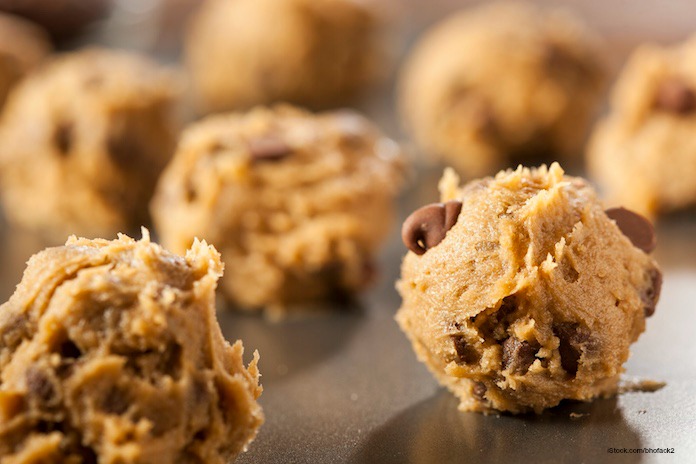When an E. coli O157:H7 outbreak in 2009 was linked to the flour used in prepackaged cookie dough, many people were shocked. How could flour, which seems so innocuous, actually be contaminated with such a serious pathogen? Flour is dry. It seems inert and safe. But flour is a raw agricultural product, and can be contaminated with pathogens just like romaine lettuce. Learn some tips for handling flour safely to avoid food poisoning.

Flour is so ubiquitous in the kitchen that many people don’t give it a second thought. But an E. coli O26 outbreak last year linked to Aldi’s Baker’s Corner, Pillsbury bread, and King Arthur Flour sickened 21 people in 6 states. And in 2016, an E. coli O121 and O26 outbreak linked to recalled General Mills flour sickened 63 people in 24 states.
Not only can raw flour be contaminated with pathogens, but food safety experts warn that eating raw cookie dough and cake batter can be dangerous. And homemade play dough is now off limits. The only way to make sure that the cookie dough you want to eat is safe is to use pasteurized eggs and heat treated flour; neither of those products are easy to find.
So you want to make some biscuits using your grandmother’s recipe. How should you proceed?
First, don’t panic. The odds that the flour you bought is contaminated with pathogens is small, but it’s still there. Stay aware of recalls: there have been dozens of recalls of flour for pathogens in the past few years.
Then treat flour as you would treat raw chicken and raw ground beef. Handle it carefully. Don’t let the raw flour touch foods that will be eaten raw. Wash all utensils, plates, and surfaces that came into contact with the flour. And wash your hands thoroughly with soap and water after you are done cooking.
Raw flour does pose a unique threat. Because the particles are so fine, they can drift and land on surfaces you may not think to clean, such as cupboard doors and handles. It’s a good idea to wipe down those doors and handles with wet and soapy paper towels after you are done cooking.
And now that you know about this issue, you can take steps to protect yourself and your family as you cook at home.




